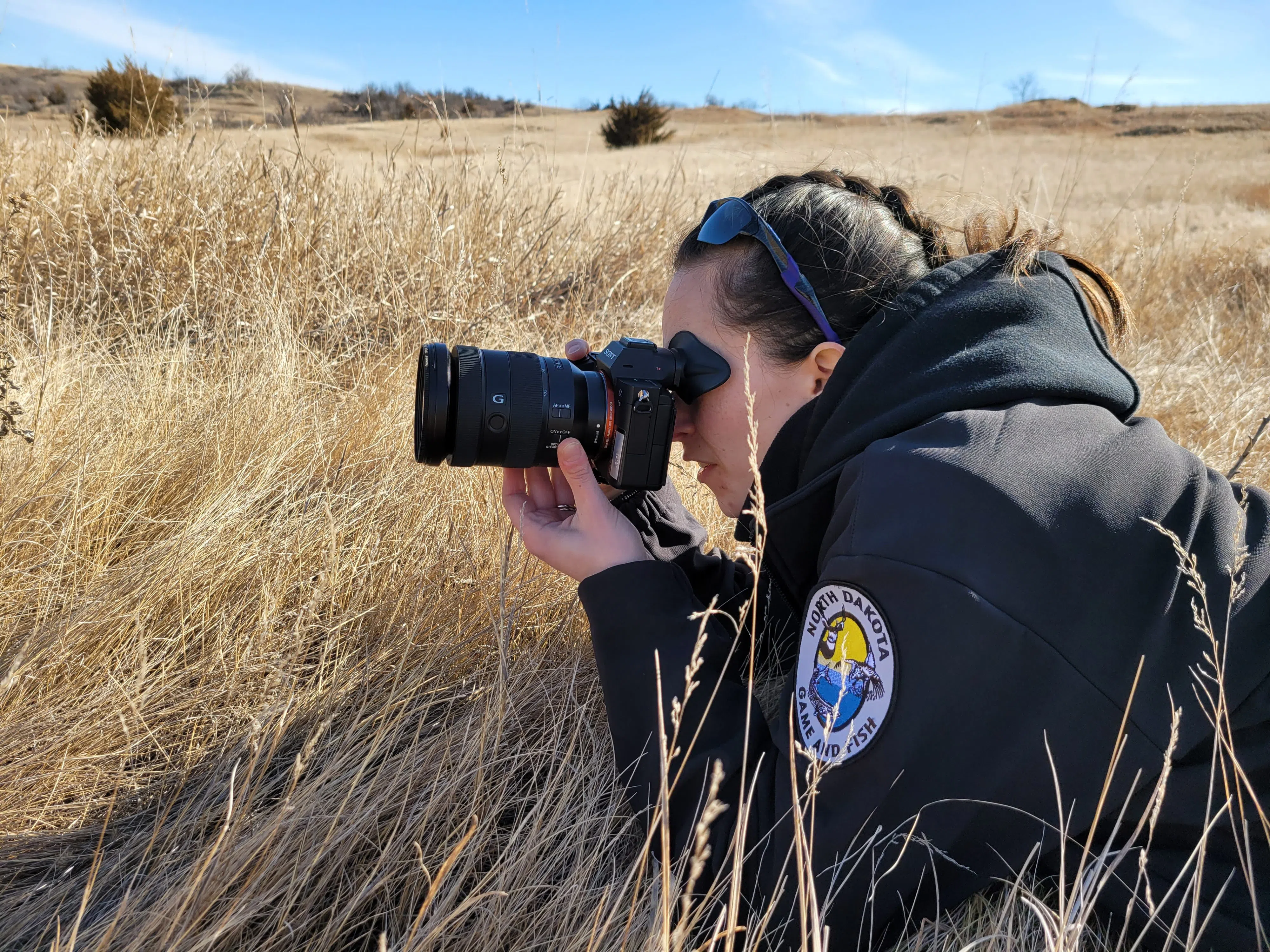
By Doug Leier
There’s a big difference between doing it and doing it well. I can take outdoor photographs but it’s more the equivalent of beating a drum than “playing” the drums.
Everyone has a camera on their mobile device but taking a picture and true photography are not one in the same. Trust me. I have many blurry, out of focus images on my phone. It doesn’t matter how good the camera on my phone is. It can’t improve poor choices of settings, lighting and placement.
I know enough to ask the experts like Ashley Peterson, Game and Fish photographer/videographer, who offers up some tips to help you make the best effort behind the lens:
 Gear
Gear
The first question Peterson relates to is assess “What’s the goal?” Typically speaking, more expensive setups offer more bells and whistles. Some features are very desirable for specific situations, but if you won’t be photographing those situations, then naturally those features won’t matter to you.
I’m a strong advocate for familiarizing yourself with what you have and becoming the best at using that first. In addition to your camera choice, a trusty, stable surface to set the camera on while shooting plays a key part.
I’m of the opinion that steadiness is underrated as a factor when it comes to producing clean and clear images.This could be in the form of a tripod, steady bag, rock, fencepost or even your vehicle.
Concealment is key
The less threatened the intended subject feels, the more likely I am to get a natural-looking image.
For wildlife, that’s typically my goal – documenting animals in their natural settings.
Accomplishing this comes in a few forms, such as setting up in a blind, crouching in bullrushes in a wetland or hunkering down inside a vehicle.
Patience
The least impact I can make on a spot, the better in my book. This pertains to borrowing time on private land too if I’m fortunate to get permission.
I try not to overstay my welcome. As time has proven, this usually rewards me with repeated success in the same area.
Be patient with wildlife and with yourself. Sometimes I sit in a single spot for an hour, see many animals, and get no photos. Either because I’m not prepared or I’m trying to rush the shutter.
The Close
I think the most important thing I’ve learned in this space is to have a goal. Have a backup goal. Then expect nothing and let the images come to you. See what you can see, then see if you can capture an image of it.
That doesn’t have to mean deep pockets or traveling across the state. Learning your gear, the intended animals, and how ambitious you set out to be goes further than the latest and greatest, as far as I’m concerned. For more insight and advice read this free in North Dakota Outdoors magazine.




Comments